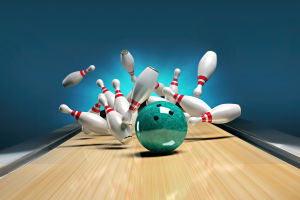Hey Lykkers! If you've been curious about skiing but haven't taken the plunge yet, don't worry – it's easier to get into than you think! Every year, many of us in Taiwan head over to Japan for a winter adventure, and skiing is one of the most exciting parts of that trip.
Whether you're interested in learning or you're just about to hit the slopes, let's go through the basics, from essential gear to beginner tips and tricks!
The Essentials: Skiing Gear You Can't Miss
When you're out in the snow, staying warm and comfortable is the key to having a good time. According to skiing coach Baron, making sure you're properly dressed is half the battle. So, let's break down the essential gear you'll need to enjoy skiing safely and comfortably:
1. Ski Jacket and Pants: These are designed to be waterproof, breathable, and warm. It's not recommended to wear just regular waterproof clothes – while they might seem fine, they don't have the specialized features of ski gear, like snow skirts on jackets to keep snow out when you fall. For layering, we recommend wearing moisture-wicking clothes underneath, and a ski jacket as your outer layer. If you get too warm, you can always remove a layer. A common mistake beginners make is wearing heated clothing, which can make you too hot and lead to catching a cold when you unzip your jacket to cool down.
2. Ski Socks: Keeping your feet warm is just as important! Choose socks made of 50% wool and 50% moisture-wicking fibers. These materials help keep your feet warm and dry without being too thick. Avoid regular wool socks since they can be too bulky.
3. Gloves: Ski gloves are essential for keeping your hands warm and dry. There are different types: regular gloves for high mobility, mittens for better warmth (also known as "little dings"), and lobster gloves, which separate your thumb and index finger for a balance of both warmth and flexibility. Make sure to choose waterproof ones with a higher rating than Gortex for optimal performance.
4. Goggles: Goggles help protect your eyes from snow and wind, while also preventing fogging. Look for goggles that fit well with your face shape and helmet. If they don't sit properly, they might fog up, making your experience miserable. Also, ensure they are designed to filter out harmful light while improving visibility on the slopes.
5. Helmet: A ski helmet not only protects your head but also keeps you warm. Unlike rollerblading helmets, ski helmets have padding to provide insulation against the cold.
6. Ski Boots: According to Baron, the most important gear for skiing is your boots. Soft boots are recommended for beginners since they are more forgiving and comfortable. You can find boots with different tightening systems – from traditional laces to BOA systems and pull straps. Make sure the boots fit well to avoid discomfort and ensure a safe experience.
7. Skis: There are many types of skis, so choosing the right one depends on your height, weight, and the type of skiing you plan to do. For beginners, Baron suggests opting for skis that are shorter than your height (about 15 cm shorter), which are easier to maneuver.
Beginner Ski Tips You Should Know
Now that we've covered the essentials, it's time to talk about some important tips for beginners:
1. Take a Lesson: The first thing we recommend is hiring a ski instructor to teach you the basic skills. Skiing isn't something you should learn by trial and error. Having an instructor will ensure you pick up the right techniques and avoid bad habits.
2. Check Your Surroundings: Always look both ways before heading down the run. You'll want to avoid crashing into other skiers or snowboarders. Being aware of your surroundings is key to staying safe.
3. Speed Control: If you can't control your speed, the best thing to do is sit down. The larger surface area of your body on the snow will naturally slow you down, and it's safer than trying to keep going too fast.
4. Gear Placement: Always place your skis the right way – with the bindings facing down into the snow to avoid them sliding away.
5. Protective Gear: Consider wearing wrist guards and padded shorts to reduce the risk of injury, especially when you're still learning.
Frequently Asked Questions: Skiing Edition
Q1: Skiing vs. Snowboarding – What's the Difference?
Skiing and snowboarding are completely different sports. Skiing involves straight-line movements, with the ability to turn left or right easily. Snowboarding, on the other hand, requires you to ride sideways, moving in one direction only. As a beginner, you might wonder which one is easier to start with. According to Baron, about 70-80% of people choose snowboarding, simply because it looks cooler.
Q2: When is Skiing Season?
In Japan, the skiing season generally lasts from early December to April. The snow is perfect, and the resorts are busy throughout this period.
Q3: Can You Ski at Night?
Yes! Many ski resorts offer night skiing, where you can enjoy the slopes under the stars. The experience is quite different from daytime skiing and offers a unique, quieter atmosphere.
Q4: Best Locations for Beginners
Baron recommends beginners start in resorts with well-maintained beginner slopes and reliable instructors. Resorts like Hakuba in Japan are known for their excellent beginner-friendly facilities.
Skiing might seem like a challenging sport at first, but with the right gear, some helpful lessons, and a little practice, we can all have a great time on the slopes. Remember to stay safe, be mindful of your surroundings, and enjoy the thrill of learning something new. So, what are you waiting for, Lykkers? Grab your gear, hit the slopes, and start your skiing adventure today!


